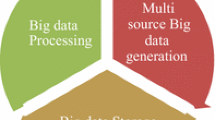Abstract
Government data sharing can effectively improve the efficiency and quality of government services and enhance the ability of providing government services. However, data sharing may bring the risk of citizen privacy leakage. It is a challenging problem on improving government governance and service levels when sharing government data while guaranteed citizens’ privacy. For the diversity types and complex attributes of government data, this paper proposes a cluster-based anonymous table data sharing privacy protection method (CATDS). Firstly, preprocessing the data table. According to the correlation degree between attributes, the clustering algorithm is used to divide the data attribute column to generate multiple tables. That can reduce the data dimension and improve the algorithm execution speed. Then clustering the table data using k-medoids clustering algorithm to generate a clustering result table that initially satisfies the ķ-anonymity requirement. That can reduce the next generalization degree and improve the data availability. Finally, anonymizing the resulting clusters through generalization technique to ensure the privacy of the shared data. By comparing the CATDS with the Incognito algorithm which is a classical ķ-anonymity algorithm, it is proved that the proposed algorithm can effectively reduce the amount of information loss and improve the availability of shared table data while protecting the private information of shared table data.



Similar content being viewed by others
References
Aggarwal G, Feder T, Kenthapadi K (2006) Achieving anonymity via clustering. In: Proceedings of the twenty-fifth ACM SIGMOD-SIGACT-SIGART symposium on principles of database systems. ACM, pp 153–162
Cramér H (2016) Mathematical methods of statistics (PMS-9). Princeton University Press, Princeton
Dong L (2013) Classification mining based on privacy protection. Urban Construction Theory Research: Electronic Edition 22
Fang B, Jia Y, Li A, Jiang R (2016) Summary of big data privacy protection technology. Big Data 2(01):1–18
Gao Y (2017) Research on key technologies of privacy protection in data publishing. Beijing University of Posts and Telecommunications
Greenacre M, Primicerio R (2013) Measures of distance between samples: noneuclidean. Multivariate analysis of ecological data 5-1
He Z, He Z (2005) E-government information resource sharing and protection of personal information privacy. J Intell 3:2–4
Huang R, Liu L (2017) Personal privacy protection issues and countermeasures in the government data opening of China. Library 10:1–5
Huang R, Miao W (2017) Security protection countermeasures of Chinese government open data. E-Government 5:28–36
Jiang H, Zeng G, Ma H (2017) Greedy clustering anonymous method for table data publishing privacy protection. Softw J 28(02):341–351
Lin JL, Wen TH, Hsieh JC et al (2010) Density-based microaggregation for statistical disclosure control. Expert Syst Appl 37(4):3256–3263
Liu X, Li Q (2016) Differential privacy protection data publishing method based on clustering anonymization. Commun J 37(05):125–129
Liu L, Luo R (2017) Research on government data opening and personal privacy protection from the perspective of big data. Inf Sci 35(2):112–118
Liu F, Fan H, Jin S, Jia Y (2012) A new k-anonymous privacy protection algorithm. Inf Netw Secur 08:199–202
Meng Y (2017) Research on inter-departmental sharing mechanism of government information resources under E-government. China Manag Informationization 22:149–150
Rousseeuw PJ (1987) Silhouettes: a graphical aid to the interpretation and validation of cluster analysis. J Comput Appl Math 20:53–65
The General Office of the State Council (2017) Notice of the general office of the state council on printing and distributing the implementation plan for the integration and sharing of the government information system [EB/OL]
Wang P, Wang J (2010) Research progress on anonymized privacy preserving technology. Appl Res Comput 27(06):2016–2019
Wang F, Chu J, Zhang Q et al (2017) Inter-departmental government data sharing: problems, reason and countermeasures. Libr Inf 5:54–62
Xin L, Feng GAO (2012) Privacy protection method in E-government information sharing. J Comput Appl 32(1):82–85
Yongbin Y (2014) Research on privacy preserving method data sharing, PhD thesis. Harbin Engineering University
Yuan Y (2014) Privacy protection method and research in data sharing. Harbin Engineering University
Yue S, Wu W, Gu Y (2017) Research on k-anonymity privacy preserving technology in data release. Software 38(11):12–17
Zhang Y (2012) Research on sensitive information protection in data sharing. Dalian Maritime University
Zhang X, Wang W, Tang C (2016) Research on policy and regulations of Chinese and American government data opening and personal privacy protection. Inf Stud Theory Appl 39(1):38–43
Funding
Funding was provided by Guidelines for the Application of Big Data in Housing & Urban-Rural Development areas (Grant No. 335016).
Author information
Authors and Affiliations
Corresponding author
Additional information
Publisher's Note
Springer Nature remains neutral with regard to jurisdictional claims in published maps and institutional affiliations.
Rights and permissions
About this article
Cite this article
Piao, C., Liu, L., Shi, Y. et al. Clustering-based privacy preserving anonymity approach for table data sharing. Int J Syst Assur Eng Manag 11, 768–773 (2020). https://doi.org/10.1007/s13198-019-00834-5
Received:
Revised:
Published:
Issue Date:
DOI: https://doi.org/10.1007/s13198-019-00834-5




